Occupational Safety Training for Charger and Charging Cable Manufacturing
99,000 ₫
Note: The above price is calculated per person and may vary depending on the number of trainees participating in the course and market fluctuations. For more accurate pricing support, please refer to the pricing list or contact our consulting staff directly.
Occupational safety is an important issue in charger and charging cable manufacturing plants and needs to be addressed promptly to ensure the health and safety of workers and enhance the reputation of businesses. The Occupational Safety Training is one of the effective solutions to raise awareness on how to prevent occupational accidents for workers involved in charger and charging cable production.
Table of Contents
Toggle1. Overview of Chargers and Charging Cables
a. What are chargers and charging cables?
Chargers and charging cables are two important devices for charging batteries of electronic devices such as mobile phones, tablets, laptops, and other devices.
- Charger: This device converts electrical power from a power source (electrical outlet) into a suitable form of energy to charge the battery of electronic devices. Chargers usually have one end that plugs into the power source and another end to connect the charging cable of the device to be charged.
- Charging cable: This cable connects the charger to the device that needs charging. Charging cables can have different connectors depending on the device, such as micro-USB, USB-C, Lightning (for iPhone), or other types of ports.
Both devices are indispensable when you want to charge batteries for your mobile devices daily.

b. Machinery types used in charger and charging cable production
The types of machinery used in charger and charging cable production typically include:
- Injection Molding Machines: Used to manufacture plastic or metal shells of chargers and related accessories.
- Plastic Extrusion Machines: Used to produce plastic parts of chargers or charging cables.
- Silicone Molding Machines: Used to shape silicone components in charging cables and accessories.
- Metal Cutting, Bending, and Punching Machines: Used to fabricate metal parts such as plugs and shells of chargers and cables.
- Electronic Welding Machines: Used to weld electronic circuits inside chargers and cables.
- Printing and Embossing Machines: Used to print logos and product information on the surface of chargers and cables.

c. Charger and charging cable manufacturers in Vietnam
- Apple: Famous for Lightning cables and chargers for iPhones and other Apple devices.
- Samsung: Provides chargers and charging cables for their phone and electronic device lines.
- Anker: Known for high-quality and durable electronic accessories, including chargers and cables.
- Belkin: Specializes in electronic accessories, including chargers and charging cables for various devices.
- Aukey: Renowned for high-performance chargers and cables at affordable prices.
- Xiaomi: Offers chargers and charging cables for their phones and electronic devices at reasonable prices.
- RAVPower: Produces high-tech products including quality chargers and cables.
- Sony: Known for electronic products and accessories including chargers and cables for their devices.

d. Specific roles in charger and charging cable manufacturing plants
Group 1
- Executive directors, deputy executive directors, department heads in charger and charging cable manufacturing plants.
Group 2
- Safety officers: manage safety in the plant, design safety procedures, supervise and urge workers to comply with safe work processes.
Group 3
- Component and material production:
- Procure raw materials such as plastic, metal, silicone, and electronic components.
- Operate machinery to produce components like plastic shells, plugs, electronic circuits, and cables.
- Assembly and installation:
- Workers assemble manufactured components into finished products, including installing electronic circuits and connecting cables.
- Quality control:
- Conduct quality tests to ensure chargers and cables meet safety and quality standards.
- Packing and boxing:
- Package products into final packaging to ensure safety and protection during transportation and display.
Group 4
- Office work, service, sales, marketing.
- Production management, quality management, human resources management, materials management, financial and accounting management.
- Research and development of new products, product packaging design.
2. Overview of Occupational Safety Training for Charger and Charging Cable Production
In this article, we focus on issues related to Group 3 because Group 3 directly participates in the production process and faces the highest occupational safety risks. See other groups here
a. What is Group 3 occupational safety training?
- Group 3 occupational safety training consists of sessions to equip workers with awareness on how to prevent workplace accidents.
- This safety training course helps workers identify and avoid hazards, reducing the risks of workplace accidents during their jobs.
REGISTER FOR OCCUPATIONAL SAFETY TRAINING SERVICE
b. Training duration
Initial safety training duration
- Total training time is at least 24 hours, including examination time.
- 8 hours of theory on the system of policies and laws about occupational safety and hygiene
- 8 hours of theory on basic knowledge of occupational safety and hygiene
- 4 hours of theory on specialized training content
- 2 hours of practical training on specialized content
- 2 hours for final theory exam after training completion
The safety training center will arrange multiple sessions depending on workers’ schedules. Typically, there are 6 training sessions, lasting 3 days, provided the manufacturing company arranges continuous learning time.
Periodic safety training duration
- Before the occupational safety card expires, workers wishing to renew must undergo periodic occupational safety training, with periodic training time being at least 50% of the initial training time.
Explanation: Total periodic safety training time is at least 12 hours, including examination time. Upon completing periodic training and passing the test, workers will be reissued or extended their occupational safety cards.
c. Training content
| No. | TRAINING CONTENT | TRAINING DURATION (HOURS) | |||
| Total | Including | ||||
| Theory | Practice | Exam | |||
| I | System of policies and laws on occupational safety and hygiene | 8 | 8 | 0 | 0 |
| 1 | Overview of the legal documents system on occupational safety and hygiene. | 6 | 6 | ||
| 2 | Standards and technical regulations on occupational safety and hygiene. | 1 | 1 | ||
| 3 | Specific regulations by state management agencies on occupational safety and hygiene when building new, expanding, or renovating factories, facilities to produce, use, store, and inspect machinery, equipment, materials, and substances with strict occupational safety and hygiene requirements. | 1 | 1 | ||
| II | Basic knowledge of occupational safety and hygiene | 8 | 8 | 0 | 0 |
| 1 | Basic knowledge of hazardous and harmful factors at the workplace. | 4 | 4 | ||
| 2 | Methods to improve working conditions. | 1 | 1 | ||
| 3 | Safety culture in production and business. | 1 | 1 | ||
| 4 | Rights and obligations of employers and employees; policies and regimes on occupational safety and hygiene for employees; functions and duties of safety and hygiene network staff. | 1 | 1 | ||
| 5 | Occupational safety and hygiene rules, signs, safety and hygiene instructions, use of safety equipment and personal protective equipment; skills in first aid for occupational accidents, prevention of occupational diseases. | 1 | 1 | ||
| III | Specialized training content | 6 | 4 | 2 | 0 |
| Comprehensive knowledge of machines, equipment, substances that cause hazardous and harmful factors; analysis, evaluation, and risk management of occupational safety and hygiene; safe working procedures with machines, equipment, and substances with strict occupational safety requirements. | 6 | 4 | 2 | ||
| IV | Final occupational safety training exam | 2 | 2 | 0 | 0 |
| Total | 24 | 22 | 2 | ||
See more training contents for all 6 groups
d. Occupational safety card
After completing the occupational safety training course and passing the exam, workers will be issued an occupational safety card (commonly called occupational safety certificate for Group 3).
The Group 3 safety card clearly shows information such as full name, date of birth, job, and specific working environment. It also includes training duration, red stamp, and signature confirming course completion.
According to the card issuance regulations stated in Clause 2 of Article 24 of Decree 44/2016/ND-CP, there are two cases:
- If the employer and employee have a labor contract, the employer must sign, stamp, and countersign the safety card for Group 3 workers after completing training at an occupational safety training unit and passing the exam.
- If the worker is freelance, seasonal, or has no labor contract, the training unit must sign, stamp, and countersign the safety card after the worker completes the training and passes the exam.

3. Identifying Hazards Affecting Workers During Charger and Charging Cable Production
- Risk of electric shock and explosion: Electronic devices during the production process may cause electric shock or explosion risks if not properly installed and maintained.
- Chemical hazards: The use of chemicals such as plastics, adhesives, dyes, and surface coatings can be harmful to health if exposed for a long time or improperly handled.
- Machinery accident risks: Machinery used in the production process may cause accidents if not operated according to procedures or regularly maintained.
- Noise and pressure hazards: The production process may generate high noise levels and atmospheric pressure.
- Manual handling risks: Manual tasks such as assembling small parts may lead to musculoskeletal injuries.

4. Safety Measures When Participating in Charger and Charging Cable Production
- Training and education on occupational safety:
- Train all employees about potential hazards in the production process and preventive measures.
- Provide specific instructions on using personal protective equipment and safe working practices.
- Use of personal protective equipment (PPE):
- Ensure all employees have adequate PPE such as helmets, masks, gloves, safety glasses, and waterproof jackets.
- Manage and replace PPE regularly to ensure effective protection.
- Quality inspection and equipment maintenance:
- Perform regular maintenance on machinery and equipment to ensure safe and effective operation.
- Inspect the quality of raw materials and components to meet safety standards.
- Chemical hazard prevention:
- Use safe chemicals according to manufacturer instructions.
- Provide detailed information and guidelines on safe chemical usage, storage, and handling.
- Risk management and emergency response capability:
- Develop and implement emergency plans to handle accidents, fires, explosions, or other incidents.
- Ensure all employees know how to act in case of emergencies.
- Continuous monitoring and evaluation:
- Conduct supervision to ensure safety measures are properly implemented and effective.
- Review and improve safety measures based on monitoring results and employee feedback.
- Periodically organize occupational environment monitoring in factories, collect and analyze harmful factors for workers, then adjust to reduce hazards to prevent occupational diseases.
5. Benefits of Occupational Safety Training for Charger and Charging Cable Production
An Toàn Nam Việt offers your enterprise the following outstanding benefits upon completing occupational safety training courses according to Decree 44/2016/ND-CP on Occupational Safety and Hygiene, for companies and enterprises.
- Workers can recognize potential occupational accident risks and take preventive measures to avoid accidents.
- Your enterprise can establish risk prevention measures in production, operation, and maintenance processes.
- Reduce costs caused by occupational safety risks.
- Uninterrupted production processes help increase labor productivity and product quality.
- Ensure compliance with occupational safety laws to avoid legal risks.
- Create credibility and professionalism, thereby enhancing your company’s brand.
Nam Việt’s training courses are solutions to prevent and combat external factors affecting individuals to avoid dangers that may cause injuries or even death.
REGISTER FOR OCCUPATIONAL SAFETY TRAINING SERVICE
6. Customer Feedback After Completing Occupational Safety Training for Charger and Charging Cable Production
An Toàn Nam Việt has many years of experience accompanying numerous enterprises in Vietnam generally and in southern provinces specifically. This responsibility is extremely precious to Nam Việt, which is why our Occupational Safety Training service is increasingly professional. The motivation for our growth comes from positive feedback and suggestions from enterprises we have served. Below are some testimonials from our valued partners.
Bac Nam E&C Investment and Construction Joint Stock Company
“My first experience using An Toàn Nam Việt’s service was surprising due to the 24/7 enthusiastic support from their consultants. The class organization was quick and convenient for our company, thank you very much for Nam Việt’s service!”
Hoa Dat Construction and Trading Joint Stock Company
“Nam Việt’s service has greatly helped us simplify occupational safety and complete safety documentation for work processes. The consulting team is enthusiastic and timely in addressing our concerns. 5 stars for Nam Việt.”
See more customer interviews after using An Toàn Nam Việt’s services
7. An Toàn Nam Việt’s Occupational Safety Training Capacity
An Toàn Nam Việt is a reputable and quality occupational safety training center in Vietnam today. Our safety training sessions are continuously held at factories, manufacturing plants, or construction sites across the country (all 63 provinces of Vietnam).
REGISTER FOR OCCUPATIONAL SAFETY TRAINING SERVICE
Occupational safety training license
- An Toàn Nam Việt has been inspected and certified by the Department of Safety under the Ministry of Labor – Invalids and Social Affairs for eligibility to conduct occupational safety and hygiene training. This further strengthens our occupational safety training capacity.

Materials and lectures
- Before being introduced in occupational safety training courses, our materials are reviewed to ensure accuracy and effectiveness.
- Our instructors follow teaching methods standardized by An Toàn Nam Việt, researched and developed by experts in occupational safety and hygiene training to maximize knowledge retention for trainees.
Facilities
- Controlling environmental factors in training rooms enhances teaching performance and knowledge absorption.
- Our training facilities are spacious and meet standards for area, lighting, and training equipment.
8. Nationwide Reputable Quality Safety Training Center
At An Toàn Nam Việt, we prioritize occupational safety training with passion. For us, imparting knowledge for workers to protect themselves is contributing to national development.
To ensure training effectiveness, we carefully prepare everything from teaching tools and equipment to curricula, documents, sound, and lighting.
Our occupational safety instructors are experts with many years of experience. Some have even researched hazard identification in various industries and preventive methods.
Lectures are based on practical experience and presented vividly and understandably to workers. This helps them feel comfortable during learning and effectively absorb knowledge. The knowledge always aligns with Decree 44/2016/ND-CP.
As a result, workers understand many hazard prevention methods and how to protect themselves, applying them suitably in real work.
Our training center proudly provides reputable and professional occupational safety training services with the following advantages:
- Competitive training costs while ensuring training quality.
- Flexible training schedules to suit companies’ production conditions.
- Fast and legal certification paperwork for occupational safety training.
- Experienced trainers with many years in the field.
- Training rooms controlled for factors affecting teaching quality and trainees’ knowledge absorption.
- Lectures tailored to occupational safety in enterprises.
- An Toàn Nam Việt works dedicatedly and professionally to support customers quickly and accurately.

9. Additional References for Occupational Safety Training Materials for Charger and Charging Cable Production
- Occupational Safety Training Materials for Charger and Charging Cable Production
- Set of Occupational Safety Training Materials
- Occupational Safety Training Test Sets
- Occupational Safety Training Curriculum for Charger and Charging Cable Production (charger and cable)
- Occupational Safety Multiple-Choice Test for Charger and Charging Cable Production (charger and cable)
No comments yet

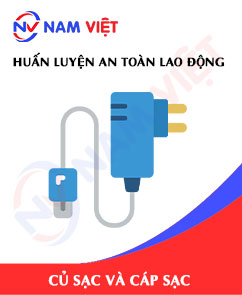
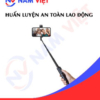
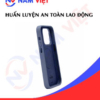



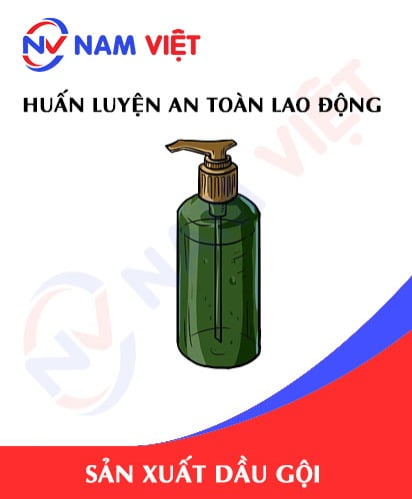
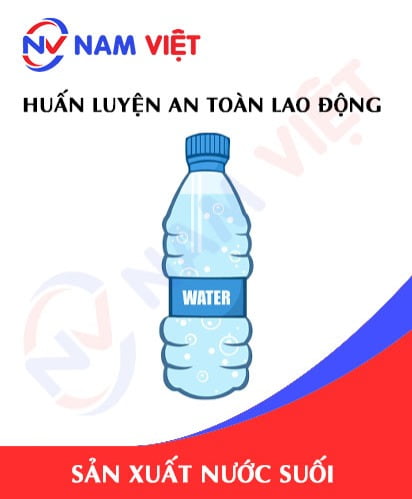

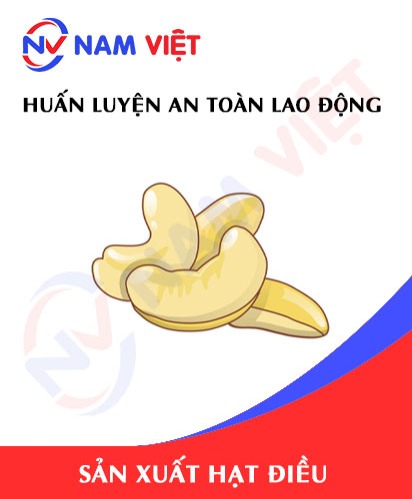




Review Occupational Safety Training for Charger and Charging Cable Manufacturing
There are no reviews yet.